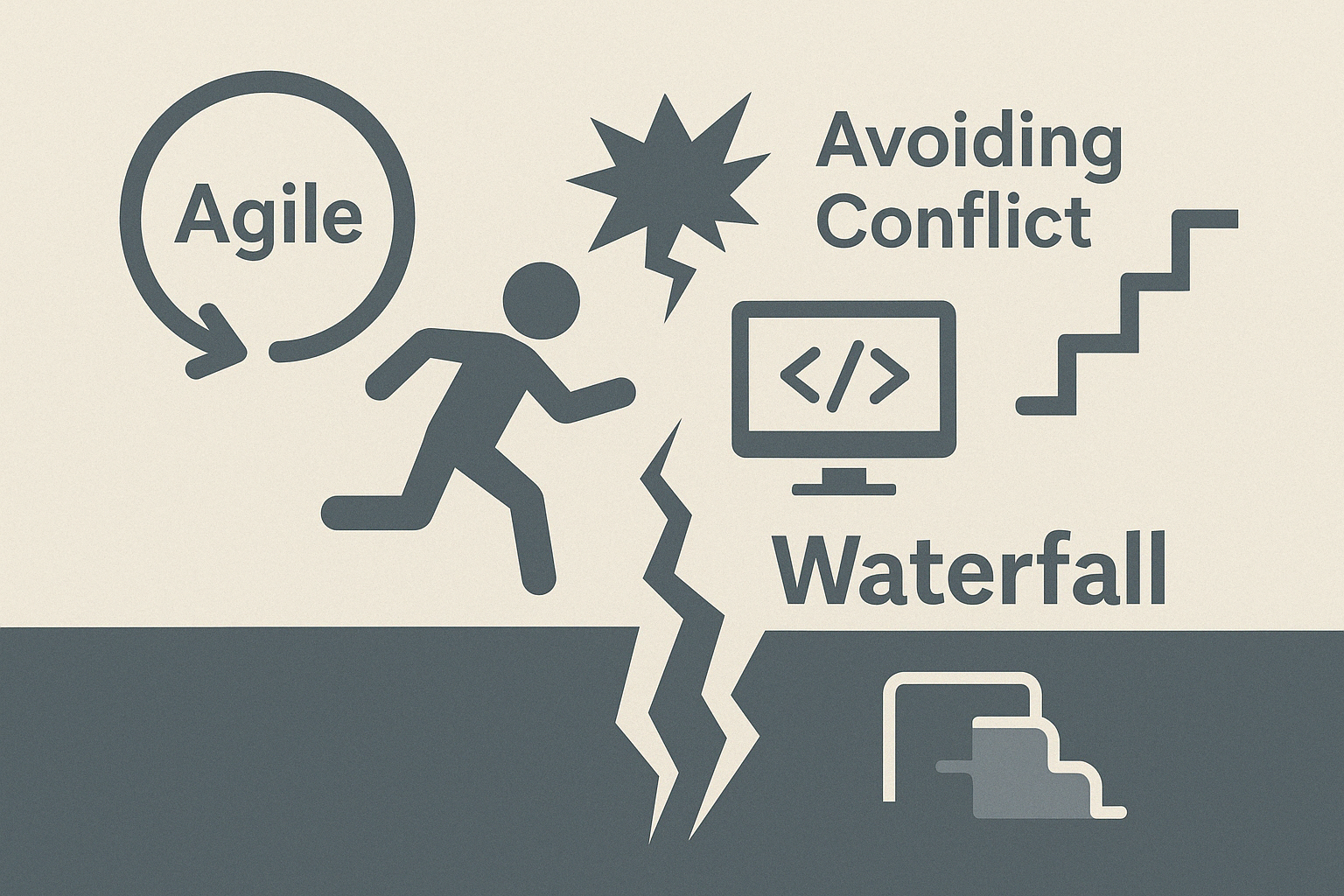Introduction: Legal Landscape of Agile Development in Japan⒈
Apr 16, 2025UP!

Agile Development Legal Risks in Japan: A Practical Overview
Agile development has grown in popularity in Japan due to its flexibility and responsiveness to change. Unlike the traditional waterfall model (used in about 90% of projects and based on work-for-hire contracts), agile development (about 10%, generally using quasi-delegation contracts) focuses on iterative, step-by-step progress and does not fix specifications in the early stages.
This flexibility benefits vendors by enabling fast response to changing client needs. However, it also introduces specific legal risks. Below is a structured and easy-to-understand summary of key legal risks faced by contractors in agile projects and how to address them effectively.
Key Legal Risks in Agile Development
| Legal Risk Type | Risk Description | Legal Impact | Recommended Actions |
| Specification Ambiguity | Difficult to define all requirements at the start; changes occur throughout the project. | Clients may dispute scope, refuse extra payments, or demand unpaid additional work. | Keep thorough records of decisions, version specifications, and document changes in meetings. |
| Information Disclosure | Failure to explain agile methods or implications to the client. | Courts may find vendors negligent for not disclosing risks or procedures clearly. | Explain agile concepts, risks, and cost/time variability early. Confirm sprint deliverables with clients. |
| Progress & Issue Management | Lack of communication or poor tracking of progress/issues throughout development. | Loss of trust, misalignment of expectations, increased chance of legal claims. | Maintain transparent sprint reporting. Share risks/issues early. Clarify misunderstanding with stakeholders. |
Agile Development Legal Risks in Japan: A Practical Overview
- Work-for-Hire Contracts: Vendors are obligated to deliver a completed product by a specified deadline. Common in waterfall models where specs are fixed upfront.
- Quasi-Delegation Contracts: Vendors must perform tasks with professional care but are not required to deliver a final product. This suits agile development due to its flexibility and evolving requirements. IPA recommends this type for agile outsourcing.
Risk Visualization: Frequency vs. Severity
Below is a visual map showing how frequent and serious each risk is considered to be in practice:
- X-axis: Frequency of occurrence (1 = rare, 5 = very frequent)
- Y-axis: Severity of legal impact (1 = low, 5 = very high)
Severity
^
5 | ● Specification Ambiguity
4 | ● Progress & Issue Management
3 | ● Information Disclosure
2 |
1 |
+—————————– —————————– > Frequency
1 2 3 4 5
Practical Recommendations
- Documentation is key: Contracts alone aren’t enough. Keep detailed records like meeting notes, email threads, sprint and product backlogs, and annotated source code.
- Explain early: Help clients understand agile, especially the flexibility and changeability of deliverables. This can reduce misunderstandings.
- Avoid assumptions: Don’t assume clients or judges understand software. Make legal arguments accessible and backed by evidence.
- Work with experts: Engage lawyers familiar with software and coding. Early legal input can prevent or simplify litigation later.
You are welcome to contact us via the Contact Form to discuss and for more information.
